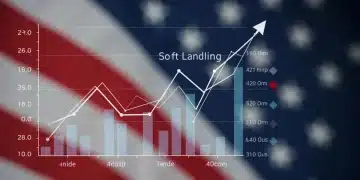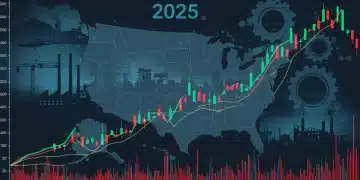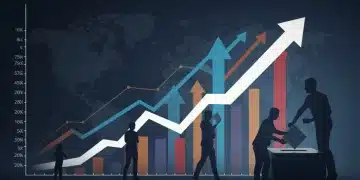7% Inflation Rate: Impact on US Consumer Spending in 2025
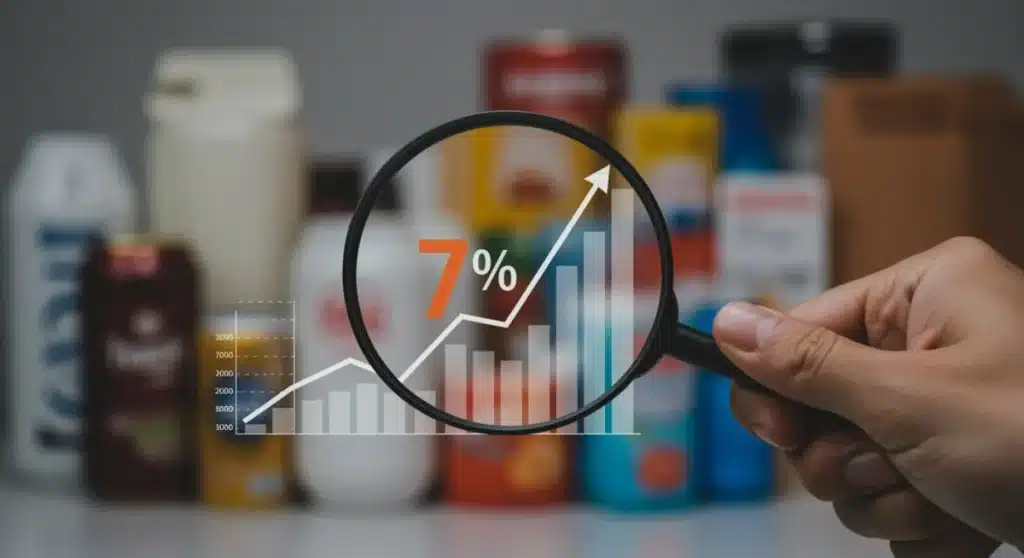
A 7% inflation rate in 2025 would significantly erode US consumer purchasing power, forcing shifts in spending habits, prioritizing essentials, and impacting overall economic growth and stability.
As we look ahead, the prospect of a 7% inflation rate on consumer spending in 2025 presents a critical challenge for households across the United States. This significant rise in the cost of living would compel consumers to re-evaluate their financial strategies, making tough choices about where their money goes. Understanding these potential shifts is key to navigating the economic landscape of the coming year.
Understanding the 7% Inflation Rate and its Immediate Impact
A 7% inflation rate, while perhaps not unprecedented in historical terms, represents a substantial acceleration in the erosion of purchasing power for the average American consumer. This figure means that, on average, goods and services that cost $100 today would cost $107 in 2025. Such a rapid increase does not merely affect luxury items; it permeates every aspect of daily life, from groceries to gasoline, housing to healthcare.
The immediate consequence for consumers is a noticeable tightening of household budgets. Families will find their disposable income shrinking, even if their nominal wages remain the same or see modest increases. This gap between rising costs and potentially stagnant wages creates a real-term decrease in financial well-being, forcing a re-evaluation of spending priorities. Many will feel a direct pinch, especially those on fixed incomes or with lower to middle-class earnings, as their ability to maintain their current standard of living diminishes.
Erosion of Purchasing Power
The core mechanism through which inflation impacts consumers is the reduction of purchasing power. Every dollar earned buys less than it did before, leading to a visible decline in what households can afford. This phenomenon is not uniform across all goods and services, as certain sectors often experience higher inflationary pressures than others.
- Everyday Necessities: Food, energy, and housing are typically the first areas where consumers feel the sting of inflation most acutely.
- Discretionary Spending: Non-essential items like entertainment, dining out, and travel are often cut back significantly as budgets tighten.
- Savings and Investments: The real value of savings can diminish, making it harder for individuals to plan for future goals like retirement or a down payment on a home.
Businesses also face increased operational costs, which they often pass on to consumers in the form of higher prices. This creates a challenging cycle where consumers pay more, demanding higher wages, which in turn can feed further inflationary pressures. Understanding this intricate relationship is crucial for both individual financial planning and broader economic policy decisions.
Ultimately, a 7% inflation rate sets in motion a chain of economic adjustments, compelling consumers to make more deliberate and often difficult choices about their expenditures. The immediate impact is a palpable sense of financial strain and a strategic pivot towards essential spending, laying the groundwork for broader economic shifts.
Shifts in Consumer Spending Habits and Prioritization
When faced with a significant 7% inflation rate, consumer spending habits undergo a profound transformation. The foundational principle guiding these changes is a heightened focus on essential goods and services, often at the expense of discretionary purchases. Households become adept at distinguishing between needs and wants, with the latter frequently deferred or entirely eliminated from budgets.
This shift isn’t merely about cutting back; it’s about strategic reallocations. Consumers actively seek ways to maximize the value of their shrinking dollars, leading to behavioral changes such as increased bargain hunting, switching to generic brands, and reducing consumption where possible. The psychological impact of rising prices also plays a role, fostering a sense of frugality and caution that extends beyond immediate financial constraints.
Strategic Budget Reallocation
Families will engage in meticulous budget re-evaluation, scrutinizing every expense. This often means less spending on non-essential categories and more careful management of fixed costs. The goal is to preserve as much purchasing power as possible for the items deemed critical for daily living.
- Food: Expect a move towards home cooking, bulk buying, and purchasing cheaper protein sources or seasonal produce. Dining out will likely become a rare treat rather than a regular occurrence.
- Transportation: Consumers may reduce driving, opt for public transit, or consolidate errands to save on fuel costs. The demand for fuel-efficient vehicles could also see an uptick.
- Housing: While housing costs are often less flexible, inflation can impact rental prices and mortgage payments. Homeowners might delay renovations, and renters might seek more affordable living arrangements.
Beyond these immediate adjustments, there’s a broader trend of consumers becoming more resourceful. This could manifest in increased DIY projects, extended lifespans for durable goods, and a general move away from a ‘buy new’ mentality. The emphasis shifts from convenience to cost-effectiveness, prompting a re-evaluation of long-held spending patterns.
The net effect of these changes is a more resilient, albeit more constrained, consumer base. While challenging, this period of adjustment can also foster greater financial literacy and a deeper appreciation for value. However, the overall impact on the economy will be a slowdown in sectors heavily reliant on discretionary spending.
Impact on Different Income Brackets and Demographics
The effects of a 7% inflation rate are far from uniform across the population; they disproportionately burden different income brackets and demographic groups. Lower-income households, in particular, bear the brunt of rising prices, as a larger percentage of their income is allocated to essential goods and services – precisely the categories most susceptible to inflationary pressures. For these families, a 7% increase can mean the difference between making ends meet and falling into financial distress.
Middle-income households also experience significant strain. While they may have more discretionary income than lower-income groups, their ability to save and invest for future goals is severely hampered. The dream of homeownership, higher education, or a comfortable retirement becomes more distant as the real value of their earnings diminishes. This erosion of financial stability can lead to increased anxiety and a feeling of being constantly behind.
Disparate Effects Across the Spectrum
Inflation acts as a regressive tax, impacting those with fewer resources more heavily. The wealthy, who typically have diversified assets and higher disposable incomes, are often better equipped to weather inflationary storms, sometimes even finding opportunities in shifting markets. This exacerbates existing wealth inequalities.
- Low-Income Households: These groups allocate a higher proportion of their income to basic necessities like food, rent, and utilities. A 7% increase in these costs can quickly lead to difficult choices between essentials.
- Middle-Income Households: While still able to afford basics, their capacity for discretionary spending, saving, and investing is significantly reduced, impacting long-term financial security and upward mobility.
- Fixed-Income Earners: Retirees and individuals on fixed benefits are particularly vulnerable, as their income does not adjust quickly enough to keep pace with rising costs, leading to a substantial decrease in their standard of living.
Demographic factors also play a role. Younger generations, often burdened with student loan debt and facing high housing costs, may find it increasingly difficult to achieve financial milestones. Older individuals on fixed incomes, on the other hand, struggle to maintain their established lifestyles. Single-parent households or those with multiple dependents also face magnified challenges in stretching their budgets.
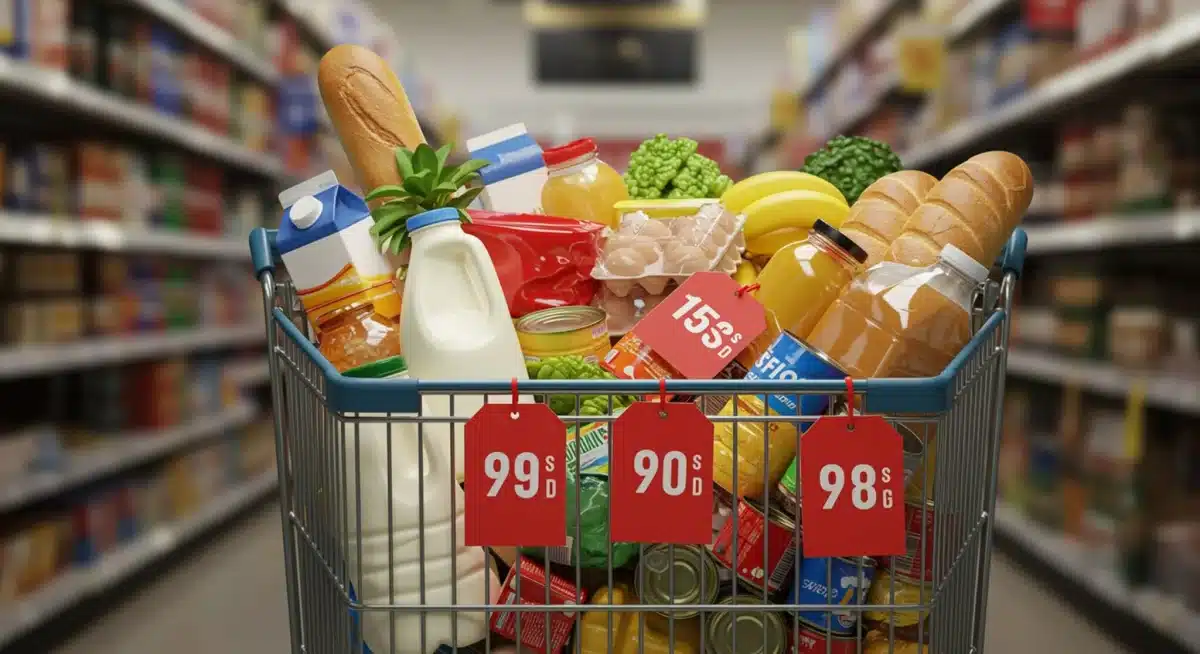
Understanding these varied impacts is crucial for policymakers and social programs designed to mitigate the adverse effects of inflation. Without targeted support, a sustained 7% inflation rate could deepen economic divides and increase social hardship across the nation.
The Role of Wages, Savings, and Debt in an Inflationary Environment
In an environment marked by a 7% inflation rate, the interplay between wages, savings, and debt becomes a central determinant of consumer financial health. For many, the critical question is whether wage growth can keep pace with rising costs. If wages lag behind inflation, as is often the case, the real income of consumers declines, directly impacting their ability to maintain their purchasing power. This creates a challenging dynamic where individuals feel like they are running in place, or even falling behind, despite potentially seeing increases in their paychecks.
Savings also take a hit during periods of high inflation. The real value of money held in traditional savings accounts, which typically offer low-interest rates, diminishes rapidly. This discourages saving and can push individuals towards riskier investments in an attempt to preserve their wealth. The incentive to spend rather than save can become stronger, complicating long-term financial planning.
Navigating Financial Headwinds
Debt, on the other hand, presents a more complex picture. For those with fixed-rate debt, such as mortgages, inflation can actually reduce the real value of their repayments over time. However, for new borrowers or those with variable-rate debt, rising interest rates—often a response to inflation—can make borrowing significantly more expensive. This dual impact means that while some debts might feel lighter, new borrowing becomes a heavier burden.
- Wages: The primary battleground for consumers. If wage increases don’t match or exceed the 7% inflation rate, living standards will inevitably decline.
- Savings: The real value of cash and low-interest savings accounts erodes, pushing individuals to seek inflation-hedging assets or risk losing purchasing power.
- Debt: Fixed-rate debt can become cheaper in real terms, but variable-rate debt and new borrowing costs typically rise with inflation and interest rate hikes.
The choices consumers make regarding these financial pillars are crucial. Some might aggressively pay down variable-rate debt to avoid higher interest costs. Others might shift their savings into inflation-protected securities or real assets like real estate, if accessible. The overarching theme is one of adaptation and strategic financial management to mitigate the adverse effects of inflationary pressures.
Ultimately, a 7% inflation rate forces a re-evaluation of fundamental financial strategies. Consumers must become more proactive in managing their wages, protecting their savings, and strategically handling their debt to safeguard their economic well-being in a rapidly changing environment.
Business Responses and Supply Chain Dynamics
Businesses are not immune to the pressures of a 7% inflation rate; in fact, their responses are critical in shaping the broader economic landscape and ultimately impacting consumer spending. Facing increased costs for raw materials, labor, and transportation, businesses must decide how much of these elevated expenses to absorb and how much to pass on to consumers. This decision-making process directly influences the prices consumers encounter at the checkout, perpetuating the inflationary cycle.
Supply chain dynamics play an equally significant role. Persistent disruptions, whether due to geopolitical events, natural disasters, or lingering effects of the pandemic, can restrict the availability of goods. When demand outstrips supply, prices naturally rise. A 7% inflation rate suggests that these supply-side pressures are either unresolved or have found new avenues of impact, making it harder for businesses to efficiently deliver products to market without incurring higher costs.
Strategies for Adaptation
Businesses typically adopt several strategies to cope with high inflation. These can range from refining operational efficiencies to adjusting product offerings. The goal is to maintain profitability while minimizing the negative impact on consumer demand.
- Cost Management: Companies scrutinize their own supply chains for opportunities to reduce costs, renegotiate supplier contracts, or find alternative, cheaper inputs.
- Price Adjustments: This is often the most visible response, where businesses incrementally raise prices to offset rising expenses. The challenge is to do so without alienating customers.
- Product Shrinkflation: Sometimes, instead of raising prices directly, companies reduce the size or quantity of a product while keeping the price the same, effectively increasing the unit cost for consumers.
Innovation also becomes critical. Businesses might invest in automation to reduce labor costs or develop new, more efficient production methods. Furthermore, the competitive landscape can shift. Companies that can effectively manage their costs and maintain relatively stable prices may gain market share, while those that struggle could face significant challenges.
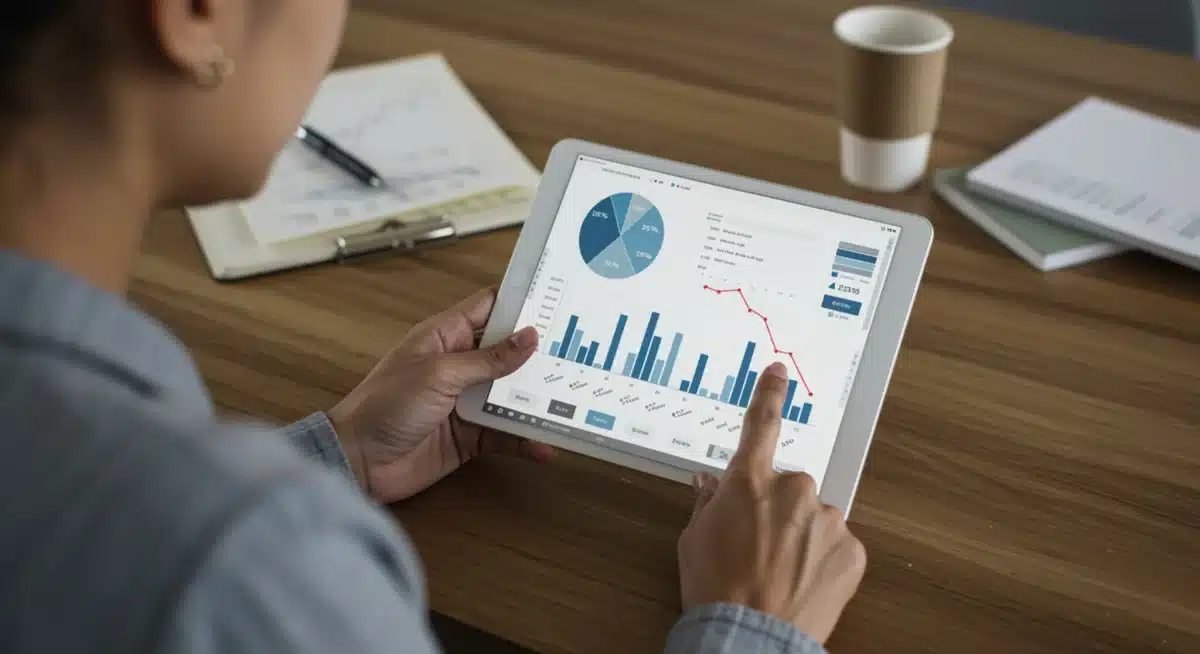
The combined effect of business responses and ongoing supply chain issues creates a complex environment for consumers. While businesses strive for stability, the inherent pressures of a 7% inflation rate mean that consumers will continue to face higher prices and potentially fewer choices, reinforcing the need for careful financial planning.
Government and Central Bank Responses to 7% Inflation
In the face of a sustained 7% inflation rate, both government fiscal policy and central bank monetary policy become crucial tools aimed at stabilizing the economy and mitigating the adverse effects on consumer spending. The Federal Reserve, as the central bank, primarily utilizes interest rate adjustments to influence inflation. Raising interest rates makes borrowing more expensive, which can cool down demand, slow economic growth, and eventually bring down prices. However, this approach carries the risk of triggering a recession and increasing unemployment.
Government responses, typically through fiscal policy, can involve a range of measures designed to support consumers or influence market dynamics. These might include targeted subsidies for essential goods, tax adjustments, or direct financial aid to vulnerable populations. The challenge for both institutions is to strike a delicate balance: address inflation effectively without stifling economic activity or causing undue hardship.
Policy Tools and Their Potential Effects
The effectiveness of these responses hinges on their timing, scale, and coordination. A misstep by either the Fed or the government could exacerbate the situation, leading to prolonged economic instability or a deeper downturn.
- Monetary Policy (Federal Reserve):
- Interest Rate Hikes: To reduce borrowing and spending, thereby curbing demand-side inflationary pressures.
- Quantitative Tightening: Reducing the money supply by selling off assets, further tightening financial conditions.
- Fiscal Policy (Government):
- Targeted Relief: Providing financial assistance or subsidies to specific sectors or low-income households disproportionately affected by inflation.
- Spending Cuts: Reducing government expenditure to lessen overall demand in the economy, though often politically challenging.
The political and economic complexities of these decisions are immense. While the goal is to protect consumers and maintain economic stability, the path to achieving this during a period of high inflation is fraught with trade-offs. For consumers, these policy decisions will directly influence the cost of borrowing, the availability of jobs, and the overall economic environment they navigate. Understanding these interventions is key to anticipating future economic conditions.
Ultimately, a 7% inflation rate necessitates a robust and coordinated response from both monetary and fiscal authorities. Their actions will play a pivotal role in determining how quickly and effectively the economy can return to a more stable pricing environment, and how much relief consumers can expect in the coming years.
Long-Term Economic Outlook and Consumer Adaptation Strategies
Looking beyond the immediate challenges, a sustained 7% inflation rate in 2025 has significant implications for the long-term economic outlook and necessitates enduring adaptation strategies from consumers. While central banks and governments will work to bring inflation down, the period of adjustment can reshape economic behaviors and expectations for years to come. Consumers, having experienced a prolonged period of elevated prices, may permanently alter their spending, saving, and investment habits, even after inflation subsides.
The long-term outlook might include a greater emphasis on financial resilience, with individuals prioritizing emergency savings and diversification of assets. There could also be a shift in societal values, with less emphasis on conspicuous consumption and more on durability, utility, and value for money. Businesses, too, will adapt, potentially leading to more efficient supply chains and a greater focus on domestic production to mitigate future external shocks.
Building Resilience in a Changing Economy
For consumers, building long-term resilience against inflation involves a multi-faceted approach that extends beyond simple budgeting. It requires a strategic mindset towards financial growth and protection.
- Investment Diversification: Shifting investments to include inflation-hedging assets like real estate, commodities, or inflation-protected securities can help preserve wealth.
- Skill Development and Wage Growth: Investing in education and skills that command higher wages can help individuals outpace inflation over time.
- Debt Management: Prioritizing paying down high-interest, variable-rate debt reduces vulnerability to rising interest rates and frees up cash flow.
- Frugality as a Lifestyle: Adopting sustainable consumption patterns, such as repairing instead of replacing, and seeking value in every purchase, can become a permanent lifestyle change.
The economic landscape of 2025, shaped by a 7% inflation rate, could foster a more financially savvy and resilient consumer base. While the journey through high inflation is undoubtedly challenging, it can also accelerate innovation and encourage more sustainable economic practices. The long-term success of both individuals and the economy will depend on the ability to learn from these pressures and adapt effectively to new realities.
In conclusion, the long-term economic outlook under a 7% inflation rate calls for significant adaptation. Consumers will need to cultivate robust financial strategies, and the economy as a whole will be driven towards greater efficiency and resilience, influencing trends for years to come.
| Key Impact Area | Brief Description of Effect |
|---|---|
| Purchasing Power | Significant erosion, requiring consumers to pay more for the same goods and services. |
| Spending Habits | Shift towards essentials, reduced discretionary spending, increased bargain hunting. |
| Income Brackets | Disproportionately affects lower and middle-income households and fixed-income earners. |
| Economic Outlook | Long-term consumer adaptation, potential for shifts in investment and financial resilience. |
Frequently Asked Questions About 7% Inflation
A 7% inflation rate means that, on average, goods and services will cost 7% more than they did the previous year. This directly impacts daily expenses like groceries, gas, and utilities, making them more expensive and reducing your overall purchasing power.
Your savings will lose real value. If your savings account interest rate is lower than 7%, the money you have saved will buy less in the future. For example, $100 saved today will only have the purchasing power of $93 a year from now, if not invested optimally.
Yes, essential goods like food, energy, and housing typically see more pronounced price increases during inflationary periods. Discretionary items such as entertainment, luxury goods, and travel may also increase, but consumers tend to cut back on these first.
Consumers can adapt by prioritizing essential spending, seeking cheaper alternatives, increasing savings in inflation-hedged assets, and focusing on skill development to enhance earning potential. Budgeting and debt management become even more crucial.
Central banks raise interest rates to cool demand and curb inflation. Governments may implement fiscal policies like targeted aid or spending cuts. These actions aim to stabilize prices but can also impact economic growth and employment levels.
Conclusion
The prospect of a 7% inflation rate profoundly impacts consumer spending, reshaping financial landscapes and challenging households across the United States. From the immediate erosion of purchasing power to the strategic reorientation of budgets towards essentials, consumers will need to adapt their financial behaviors significantly. This inflationary pressure disproportionately affects lower and middle-income households, while also compelling businesses to adjust their pricing and supply chain strategies. Ultimately, the coordinated responses from government and central banks, combined with individual financial resilience, will determine how effectively the nation navigates these economic headwinds, fostering a more cautious yet potentially more robust consumer base in the long term.

